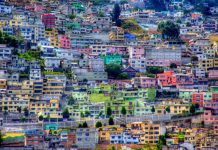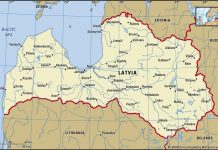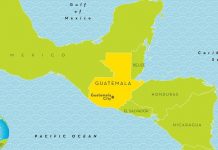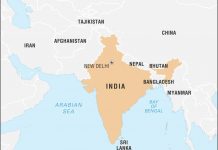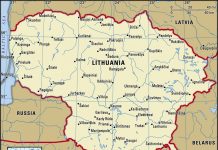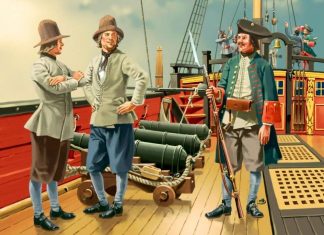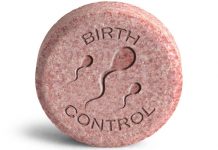Republic of Poland
Capital: Warsaw
Area: 312,683 sq. km/120,728 sq. miles
Population: 38 64 3000
Population density per sq. km/sq. mile: 124/320
Ethnic composition
98% of the population are Poles (Eastern Slavs). There are also Germans, Ukrainians and Belarusians. The rights of the 500,000-strong German minority in Poland, their culture, language and religion are protected by the cooperation agreement with 1ermania, which also ratifies the border between the rivers Odrom and 11sye-se. The official language is Polish.
Religion
95% of the population are Catholics, 2% or 870 thousand belong to the Polish Autocephalous Orthodox Church and 100 thousand are Protestants. The Roman Catholic Church— an influential organization that played a major role in the formation of Polish nationalism, defended human rights when Cardinal Stefan Wiesinski was at its head. The actions of the Catholic Church were fully approved by law in May 1989
History:
1. 1386-1989
In the medieval period, mainly from the XIV century, Poland was quite an influential state in Central Europe. Poland was headed by the Jagiellonian dynasty from 1386 to 1572. Having united with Lithuania in 1569, Poland became the largest country in Europe. In the middle of the XVII century . Poland suffered defeats in the wars with Russia, Sweden and Brandenburg. After that, the country was divided into parts between Russia ruling in the east, Prussia – in the west and Austria – with the center in the south and with the rights of autonomy. In 1830 and 1863 . there were uprisings against the repressive Russian regime, after which the antipathy towards Russia grew even more.
After the end of the First World War, in November 1918, the independent Polish Republic was established. Marshal Jozef Pilsudski (1867-1935), the founder of the PSP, was elected the first president of the country, and using the changes in the Soviet Union, he continued to advance to Lithuania and Ukraine. On the political side, the first years after independence were characterized by instability, when the party coalition government, which was in power from 1918 to 1926, was replaced 14 times. On May 26, 1926, a coup d’etat took place, as a result of which Marshal Pilsudski seized power. He ruled in an autocratic manner until his death in 1935. The country remained lagging behind, industry developed only in Lodz and Upper Silesia, while in 1930 60% of the entire population were dependent on agriculture.
Before the German invasion in 1939, Poland was dominated by a military regime, headed by Smigli-Ridza. Western Poland was annexed to the Nazi Reich, the rest of the territory endured severe trials. From 1940 to 1941 Eastern Poland was occupied by the Soviet Union. A third of the country’s intelligentsia was liquidated, and in general, 6 million Poles died in concentration camps, half of them Jews. By the middle of 1944, part of the Eastern Wormwood was liberated by Soviet and Polish troops led by General Ro-la-Zimirski. A communist multi-party coalition government was formed in Lublin. In March 1945, the last Nazi troops were expelled from Poland.
The Soviet Union immediately recognized the “Lublin Coalition” as the provisional government of the whole of Wormwood, but this decision was rejected by the Polish government in exile, based in London and supported by the Western Allies. It was headed by the Prime Minister, peasant leader Stanislav Mikolajczyk (1901-1967). At the Yalta Conference in 1945, an agreement was concluded to form a united government dominated by the PRI and the “Lublin Coalition”, which gained control over the security forces and the army. Their position was further strengthened when the elections to the Sejm in 1947 The list of candidates of the Lublin Coalition, the so-called Democratic Bloc, received 80% of the votes and 88% of the 444 seats. A month later, the People’s Republic was declared, in which the PRP was the predominant party, and in October 1947 Mikolajczyk fled to the West.
The new regime met with the need to resolve problems related to the 240-kilometer territory transferred to the West according to the decisions of the Potsdam Conference in July 1945. According to this agreement, the eastern border of Poland in 180 thousand square kilometers passed to the Soviet’ The Union. El and the area was almost half of old Poland. But at the same time, 100 sq. km of the territory of Germany along the Oder and Neisse rivers were annexed to Poland.
The one – party constitution in the Soviet manner was adopted in July 1952 . The Stalinist form of government in Poland was introduced by Boleslav Bierut, the leader of the PORP from 1948 to 1956. This led to rural collectivization and persecution of Catholic students. In 1953, Cardinal Vizinsky (1901-1981) was arrested. During this period, Poland joined the CMEA in 1949, and in 1955 the Warsaw Pact was signed. From 1949 to 1956 Poland was under the control of the USSR, Marshal Konstantin Rokossovsky was appointed Minister of War. In June 1956 Serious strikes and clashes took place in Poznan, as a result of which 53 people were killed. The demonstrators opposed exploitation by the Soviet Union and because of food shortages. This led to the fact that the pragmatic Vladislav 1omulka (1905-1982) became the first secretary of 1GORP. He carried out a series of moderate reforms, introduced private farming (by the mid-80s 85% of Poland’s agricultural land had passed into private ownership), released Cardinal Stefan Wiesinski and recognized Catholicism.
An unexpected increase in food prices in December 1970 caused a new wave of discontent in Gdansk, Gdynia, and Szczecin. These demonstrations were suppressed by force, which led to the removal of the leader of the PORP Gomulka by the head of the Silesian Party, the leader of the party technocratic faction, Edward Guerin (born in 1913), who intended to introduce a new program of economic reforms aimed at improving living standards and increasing the production of consumer goods. The country was bogged down in debt, and in June 1976 demonstrations began in Radom and Ursus due to price increases. Opposition to the Gerek regime, which was accused of corruption, increased in 1979. After that, the newly elected Pope John Paul II (born in 1920), the former Cardinal of Krakow Votila, came to the homeland of Gerek. In June 1980, strikes began in Warsaw due to crop failures and rising meat prices, which quickly spread throughout the country. The government tried to appease the strikers by negotiating with unofficial strike committees, but at the Gdansk shipyards the demands combined into one – to allow the formation of independent trade unions, the government made concessions, and as a result, in August 1980, the Solidarity association was formed in Gdansk and led by electrician Lech Walesa (born in 1943).
In September 1980, the sick Gerek was removed from the post of the first secretary of the PORP, and Stanislav Kania took his place. Riots continued, the instigator of which was the 10-million “Solidarity”, which demanded a five-day working week and the introduction of rural “Solidarity”, which was later done. At this time, disagreements began within the PORP itself, and many advocated democratization, later joining Solidarity. Due to the growing shortage of food and the loss of control of the PORP, Kania was ousted, and the new leader of the PORP was Prime Minister and Minister of Defense General Wojciech Jaruzlski (born in 1927). This happened in October 1981 due to the active military actions of the Soviet Army < on the border with Poland, and on December 13, 1981 martial law was imposed in the country. The work of trade unions was banned, the leaders of Solidarity were arrested, a curfew was imposed and a Military Council of National Salvation was created, which was headed by Yaruzlsky himself. Five months of brutal repression followed, as a result of which 15 people died and 10,000 were arrested. The actions of the Polish Government were condemned by the United States, which imposed economic sanctions on the country.
In June 1982, the curfew was relaxed, but in August the horse racing continued. Three months later, Lech Walesa was released, in December 1982 martial law was temporarily lifted, and in July 1983 it was abolished altogether. In June 1983, Pope John Paul II visited Poland.
The response of the authorities was the dissolution of the Military Council and the guarantee of amnesty for political prisoners. The amnesty was announced in June 1984 and coincided with the 40th anniversary of the formation of the People’s Republic, while the government asked the United States to ease economic sanctions. The remaining restrictions were completely lifted in February 1987.
Jaruzelski’s government continued pragmatic reforms, including the liberalization of the electoral system. The political atmosphere was heating up and was worsened by the murder of Jerzy Popiluchko (1947-1984), a priest who supported Solidarity. The murder involved members of the security forces. This happened in October 1984 due to the continued ban on the activities of Solidarity and the threat that passed in February 1986, but again hung over Lech Valens, who was slandered for disputes with officials of the Sejm in October 1985. Economic conditions and agricultural production were gradually improving, but Poland’s external debts were still huge. During 1988, shipyards, coal mines, ports, iron foundries were paralyzed by a wave of strikes led by Solidarity, demands were made for higher wages and compensation for recent price increases. Due to the lack of an economic strategy, the government of Prime Minister Zbigniew Messnsr resigned, and was replaced by a new one headed by communist reformer Mieczyslaw Rakovsky, and the political bureau of the PORP “merged” with the new technocrats.
After six weeks of negotiations between the POR, the Church and Solidarity, a historic agreement was reached in April 1989, according to which Solidarity was legalized, the formation of opposition parties was allowed, the Catholic Church gained official status, the monopoly on the media was lifted and a “socialist-pluralist” constitution was drawn up. In the subsequent elections to the People’s Assembly, which were held in June 1989, Solidarity received all but one seats in the Sejm and Senate and was able to continue the struggle for power; 55% of the seats in the Sejm were pre-booked for a contest between candidates of the Patriotic Movement for National Revival (PDPV), a large advanced organization of the PORP, 10% for nationalist dignitaries and the remaining 161 seats (35%) for candidates who do not belong to the PDPV. In July 1989, the Parliament elected Jaruzelski as president.
In September 1989 Tadeusz Mazowiecki (born in 1927), Prime Minister and editor of the newspaper Solidarity, took the post of president. The new government, which received a lot of financial assistance from the West, intended to reduce the degree of state participation in the economy and support the private sector. A tough program was adopted by the IMF and aimed at the problem of hyperinflation, which by 1989 amounted to 550%.
2. 1990-1999
In January 1990, the PORP self-reformed, and a new Social Democratic Party (SDP) was established. In April 1990, the Sejm voted to return the celebration of May 3 (the anniversary of the Constitution of 1791) as a national holiday and to cancel July 27 (the anniversary of the Lublin Manifesto on Communist Rule of 1944). Censorship was also abolished in April 1990. During 1990, GDP fell by 12%, and unemployment increased to 1 million in July 1990. 40 people from Solidarity, led by Zbigniew Bijak and Vladislav Frasinik, founded the Democratic Party of the Civil Movement (DPGD) to provide a credible alternative with the Central Alliance of Solidarity of Walesa (CAC), which was founded in May 1990.
In the first round of direct presidential elections, which were held on November 25, 1990, due to disagreements within Solidarity, it turned out that both Prime Minister Mazowiecki and Lech Walesa competed in the elections. During the campaign, Walesa received 40% of the votes, Mazowiecki, who defended the parliament, took third place, receiving only 18% of the votes, while Stanislav Tumipsky, a former right-wing Canadian emigrant, received 23% of the votes. In the second round, which took place on December 9, 1990, Walesa won against Tyumen by a large margin.
The defeated Mazowiecki resigned as prime minister in December 1990, and the newly elected Walesa departed from Solidarity and became president, taking the oath of office. He chose the economist and former Solidarity activist Jan Krzysztof Bilecki (born in 1951) as prime Minister. Leszek Balcerowicz, the finance minister supported by the IMF, as well as other ministers from well-known departments, joined the new government. They intended to strengthen the market economy and in January 1991 carried out the first privatization corporatization with varying success.
In a short time, the “shock therapy” program of market restructuring led to the fact that the standard of living declined even more, and GDP fell by 10% in 1991. By December 1991, popular discontent increased even more and mass riots began, unemployment increased to 2 million people (11% of the workforce).
At the end of August 1991, Beletsky decided to resign, citing the fact that he did not find support in the Sejm, which still has many communists. The Parliament refused to accept both the resignation letter and the proposal for drastic budget cuts. President Walesa insisted on awarding extraordinary powers to enable the government to work by presidential decree before the general elections. Nevertheless, this statement was rejected, which created a deadlock, but at the same time Beletsky agreed to remain as prime minister until the elections.
The October 1991 elections were the first Polish free post-communist elections in which many parties participated. Since the party roots were weak, the system of proportional representation operated. 29 parties were successful and won seats in the Sejm. During the voting, the predominant party did not stand out, the best result was the Democratic Union of Mazowiecki (DS), which received 12% of the votes, and the Central Alliance of Walesa and the Polish Peasant Party (G1CP), which received 9% of the votes. Having come to this result, President Walesa suggested that he would become both president and prime minister for two years, creating a “nationally united” coalition government, However, this proposal did not meet with support. Bronislav Geremek then tried to create a center-left coalition government, and in December 1991, Walesa reluctantly agreed to allow Jan Olshevsky, a former lawyer of Solidarity, to form a five-party center-right coalition government. The government intended to find a more optimal approach to solving the market problem, reduce the privatization program and instead help the state industry.
In October 1991, an agreement was signed with the Soviet Union on the final withdrawal of Soviet troops from Poland from November 15, 1992 to the end of 1993. The agreement was supported by the new Russian government, but the last troops left Polish soil only by September 1994. During 1992, unemployment continued to grow, reaching 2.5 million people (14% from the labor force), and although the industry developed intensively, the public sector of the industry was ineffective. Nevertheless, the reform of “shock therapy” has borne fruit. The inflation rate fell from 684% in 1990 to 60% by 1992, and during 1992 the Polish economy became the first in Eastern Europe after the collapse of communism, in which the private sector accounted for more than 50% of economic activity.














